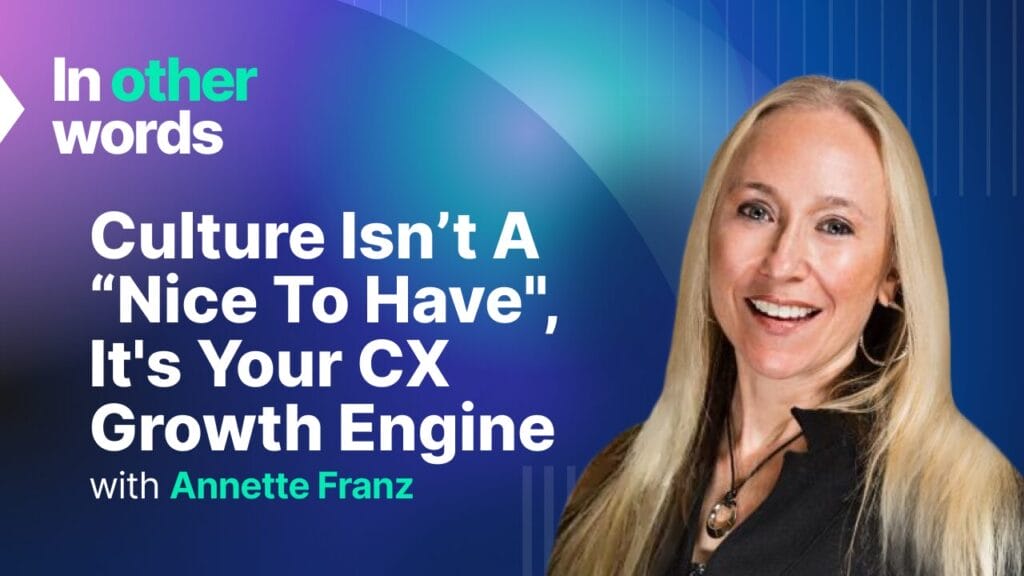Executive summary
Scaling a business across 120+ countries while keeping the customer experience coherent and personal is one of the hardest balancing acts in modern business.
In this episode of Other Words from Phrase, Canva’s chief customer officer Rob Giglio, whose career spans Adobe, DocuSign, HubSpot and now one of the world’s most used creative platforms, sits down with host Jason Hemingway, and Phrase CEO Georg Ell to talk about what it really takes to build global go-to-market strategies that endure.
Their answer isn’t a neat three-step playbook. It’s a new way of operating: treat go-to-market as orchestration, not chaos; resist quarterly revenue temptations in favor of long-term trust; and above all, put the customer at the center of everything.
The leaders share lessons from decades of building and rebuilding global engines: why Procter & Gamble–style rigor still matters in tech, how moving too fast can erode trust, how to adapt with intent, and how AI can empower customer-facing teams without losing the human touch.
Competing like an athlete, but never losing sight of the field
Rob Giglio didn’t start in tech. His career started at Procter & Gamble, where consumer brands operate with scientific precision.
“There is nothing accidental about their go-to-market,” he recalled. “And yet, in a lot of cases in B2B, it’s a little accidental. There’s a ton of data, but we don’t always use it effectively.”
His love of competition came early too:
“Somebody said to me one time, ‘Hey Rob, you love sport, you love competing; business is sport for adults.’ I totally believe it. I love to go out on the field of play… but I also know I really want to win the season and create a dynasty.”
– Rob Giglio, CCO, Canva
That competitive drive, he argues, only matters if it’s pointed toward serving customers better, otherwise you’re just playing to your own scoreboard.
Georg agreed that the pace of change and the hyper-informed, sometimes skeptical customer makes that focus harder but more necessary. “We’re living in a world where customers are opinionated, educated, and can ‘chat GPT everything’ on the fly. This is sometimes dangerously knowledgeable or dangerously misled,” he said. “It’s more complicated, but also more effective if you use the right data and tools.”
Simplicity is about orchestration, not subtraction
At first glance, “simplifying” global go-to-market sounds like stripping complexity away. Rob reframes it:
“Maybe the translation of simplification in a go-to-market context is orchestration. I like the metaphor of an orchestra. Lots of different parts, and if any one played alone it might not sound very good. You need a conductor putting pieces together at the right tempo and pace.”
– Rob Giglio, CCO, Canva
This orchestration is about sequencing people, processes, and technology so the customer’s experience feels seamless. “It’s not just taking things away; it’s putting the right things in the right place, in the right sequence.”
Georg echoed the tension between curiosity and discipline: “If you’re like me, you get excited about new technology, you see a new tool and want to introduce it. But you need patience to decide when’s the right time and where.” His teams run rigorous T-minus planning, counting back 180, 90, 30 days to align partners, support, and regional teams before a launch.
Radical customer centricity that goes beyond slogans
Both executives warned that “customer centricity” is easy to say and easy to forget once quarterly numbers loom.
“So often go-to-market orgs get wound up about themselves… about how great their product is and these neat new features…They totally lose track of the customer.”
– Rob Giglio, CCO, Canva
Canva’s 2024 customer event “Canva Create” flipped the usual script. Instead of dazzling attendees with brand-new features, founder Melanie Perkins pushed for an event built on user feedback and support requests. Every feature showcased was one customers had asked for.
“The reaction was mind-blowing,” Rob said. “Features we launched Wednesday or Thursday had millions of customers using them by Monday. I’ve been in tech for many years and that blew my mind.”
Georg pointed out how this mindset scales:
“If you put the customer at the center, and you get their OKRs and your release cadence in sync, you find real windows of opportunity. Miss them and you might miss the whole moment.”
– Georg Ell, CEO, Phrase
Local presence is strategy, not a checkbox
Global doesn’t mean homogenous. Canva recently announced its first global channel strategy with extreme caution.
“We have to be very careful,” Rob said. “Maybe some would say slow. But we want our reselling partners really well trained to embrace our ‘give value first, get value second’ philosophy.”
That philosophy drives patience: “We care more about year two and year three customer commitment and recurring revenue than year one,” he said.
Markets like Japan, Brazil, Germany, and South Korea demand deep local understanding. “Japan’s a place where most software firms rely on resellers. It’s just fact,” Rob explained. “So we localize product and messaging, but when it comes to sales-led motion, we work closely with local resellers.”
Georg’s preference is similar but starts with people:
“Hire local leaders, bring them to HQ to learn culture, then send them back to lead. Customers appreciate it; it brings credibility and attracts talent.”
– Georg Ell, CEO, Phrase
Both stressed support must feel local too. Language, hours, and responsiveness shape whether a market feels second-tier or fully served.
Learning from mistakes and designing guardrails
Rob also shared a candid story of a failed inside sales experiment early in the SaaS subscription era. His team, incentivized to hunt new ARR, instead cherry-picked existing accounts and frustrated loyal customers.
“We didn’t put guardrails in place,” he admitted. “Our best intent to grow turned into something weird. It took months of remediation.
The lesson: think very carefully about the customer experience first and about unintended consequences of incentives.”
Georg expanded: “Innovation pressure is constant, but customers can only absorb so much change. Some want the bleeding edge; others will resent it. Timing and segmentation matter.”
AI: superpower with limits
Both leaders see AI as a profound enabler, especially post-purchase.
“Today we can predict what will help a customer succeed,” Rob said. “We have usage data, we can compare it, and AI can assemble the right resources instantly. That’s a game-changer.”
But they’re clear-eyed about hype. Georg noted:
“Our expectations sometimes run ahead of delivery. AI BDRs, for example, are not quite there yet. You can tell when something’s auto-generated versus authentic. Customers want considered responses.”
– Rob Giglio, CCO, Canva
Rob added a human warning: “I don’t want to talk to a bot when buying software. It builds trust to talk to someone.”
Metrics that really matter
For Canva, the North Star is usage. Not marketing vanity, not short-term bookings.
“Are people using the product? Are they successful, coming back, collaborating?” Rob said. “If that’s happening, everything else is secondary.”
This approach fuels Canva’s viral network effect: 230 million monthly active users with almost no paid advertising.
“The best growth is organic. People love the product and want to share it,”
– Rob Giglio, CCO, Canva
Georg sees the same dynamic: “Scale should be an advantage. Better data, better talent, better investment. But it’s easy to turn inward and lose passion. You have to deliberately maximize the upsides of scale and minimize the drag.”
Enduring principles for global growth
In the end, both leaders converge on two timeless truths:
“Put the customer at the center,” Georg said plainly. “Everything else follows.”
“Give value first, get value second,” Rob added. “Don’t settle for fast, easy results at the expense of long-term trust.”
The implication for executives is to resist quarter-to-quarter myopia. Align teams, partners, and technology in service of customer success; hire local expertise and truly empower it; and use AI as a lever, not a crutch.
Listen now
For the full conversation, including more on network-driven growth, building high-credibility local teams, and how to orchestrate launches across time zones and business calendars, listen to the full episode of In other words.
Listen now
For the full conversation, including more on network-driven growth, building high-credibility local teams, and how to orchestrate launches across time zones and business calendars, listen to the full episode of In other words.






